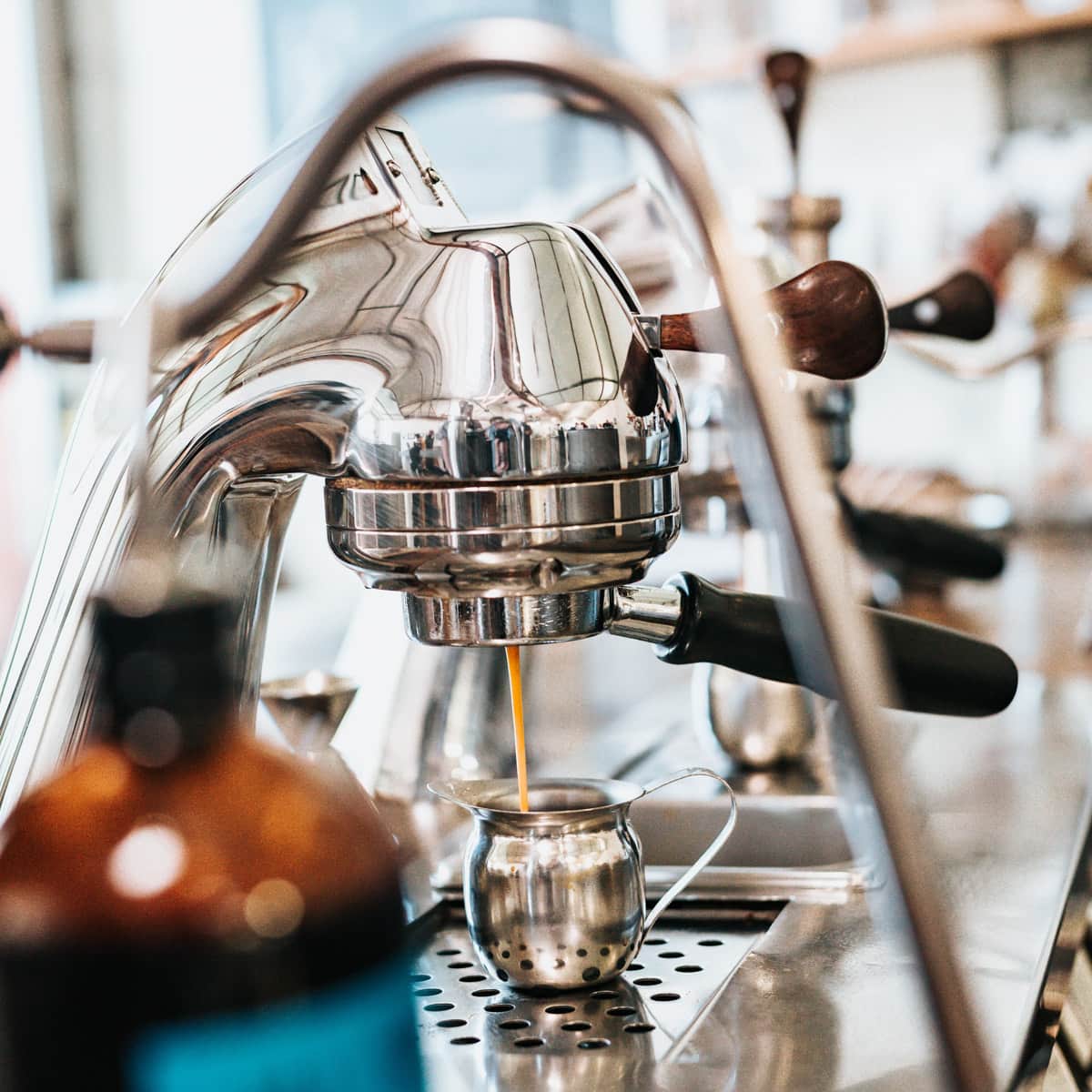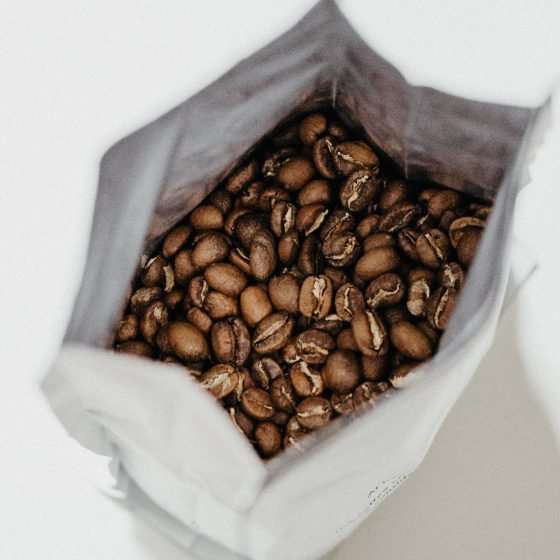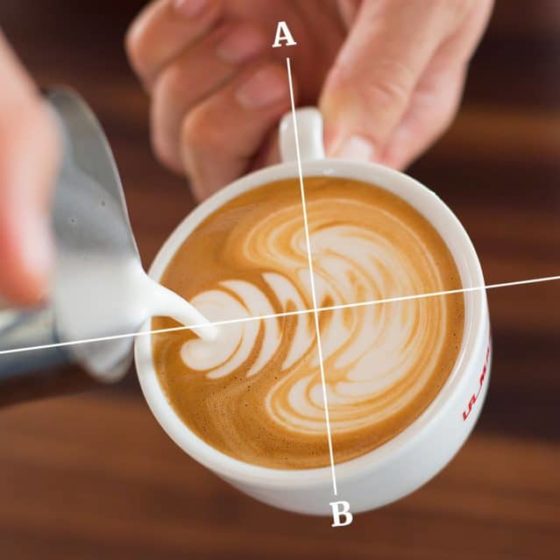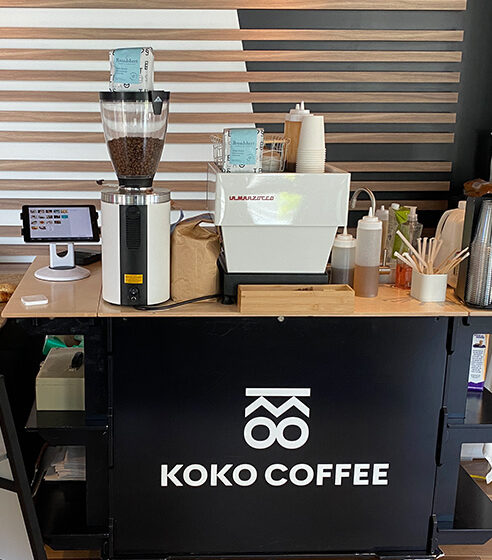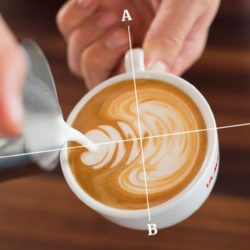Espresso is a complex and interesting drink. It is a drink that requires extreme detail to conditions and barista skills. To prepare a delicious espresso, you need to carefully select the beans, monitor the cleanliness of the equipment, water pressure, temperature, coffee dosage, tamping and brewing time. Let’s talk about this in more detail.
Espresso is a complex and interesting drink. It is a drink that requires extreme detail to conditions and barista skills. The consistency of espresso is reminiscent of syrup – a concentrated beverage with a very intense flavor.
To prepare a delicious espresso, you need to carefully select the beans, monitor the cleanliness of the equipment, water pressure and temperature, coffee dosage, tamping and brewing time. You also need experience, which gradually appears when a person prepares an espresso, tastes it and draws conclusions.
Before preparing coffee, we recommend that you learn about the main factors that affect the taste of coffee, regardless of the preparation method.

Choosing the Beans
For espresso, we recommend using specially designed espresso blends and monos. They are roasted differently than those for alternative brewing methods: according to individual roasting profiles and, as a rule, slightly darker. This is done so that the taste is sweeter and more balanced during preparation in the espresso machine.
We do not recommend choosing a light roast that is intended for alternative brewing methods. In espresso, such coffee will turn out to be sharply acidic, and its body will be watery. Our personal favorite is the Headliner by Broadsheet Coffee Roasters.
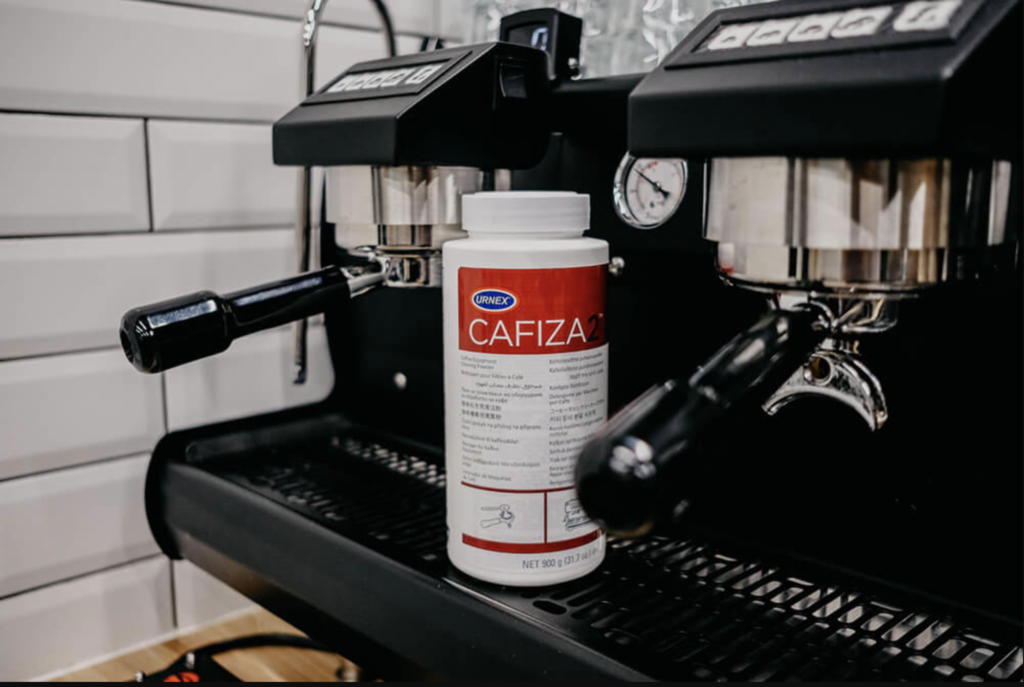
Equipment Cleanliness
The equipment must be clean – this is one of the most important factors that affects the taste of an espresso. The espresso group head, dispersion grid, basket, holder and grinder quickly become dirty, and coffee oils and old ground coffee, even in small quantities, strongly affect the taste. In order not to nullify all your efforts, you need to regularly clean the espresso machine and the coffee grinder.
We recommend cleaning the inner surfaces of the holder and the dispersion grid with special cleaning agents every 50 espresso drinks prepared. The espresso grinder can be cleaned with a regular brush daily and with cleaning products monthly.
Water Temperature
The choice of water temperature depends on the particular type of coffee and the degree of roast. For any method of preparation, except cold-brew , light roast coffee is prepared at 199.4-203 ° F, medium roast – 195.8-199.4 ° F, dark roast – 192.2-195.8 ° F.
You need to adjust the temperature depending on the result obtained, but since we are talking about preparing an espresso, we recommend setting the temperature to 199.4 ° F. This is the standard used in most barista championships and which most modern roasters roast their coffee to. Unlike alternative brewing methods, where the water temperature is a very active variable, in espresso it is set once. And in order to regulate the taste, the size of the grind or the dosage of coffee is adjusted.
Some espresso machines are not equipped with a fine temperature setting as they only have one boiler with a heat exchanger. It is simultaneously used to prepare steam, boiled water and espresso. In that case the temperature is regulated by a mechanical bolt on the pressure switch, and you will have to navigate only by taste: if the coffee is too acidic, raise the temperature, if it is too bitter, lower it.
Dosage of Coffee
The dosage of coffee depends on the size of the holder’s basket: they can be single or double. We recommend preparing espresso in a double basket, because the extraction is more stable and even due to the smoother mesh structure.
Double baskets come in smaller and larger sizes: some hold about 16 grams of coffee, the other 21 grams. We recommend using larger baskets with a dosage of 17–20 grams of coffee and using the weight of coffee indicated on the grid. That is, do not prepare espresso from 16 grams of coffee in the 21 grams basket and vice versa.
If your basket is not labeled, we recommend that you ensure that the coffee tablet is slightly below the dispersion grid of the coffee group. To do this, make several tablets in a holder in 1 gram increments and insert into the group without boiling until a slight imprint from a bolt or mesh remains on the tablet. Then reduce this weight by 3 grams – this will be the ideal weight for your holder.
The scale is one of the main tools for getting a good espresso. For a consistent result, we recommend weighing the coffee on a scale in 0.1 gram increments before preparing each portion.
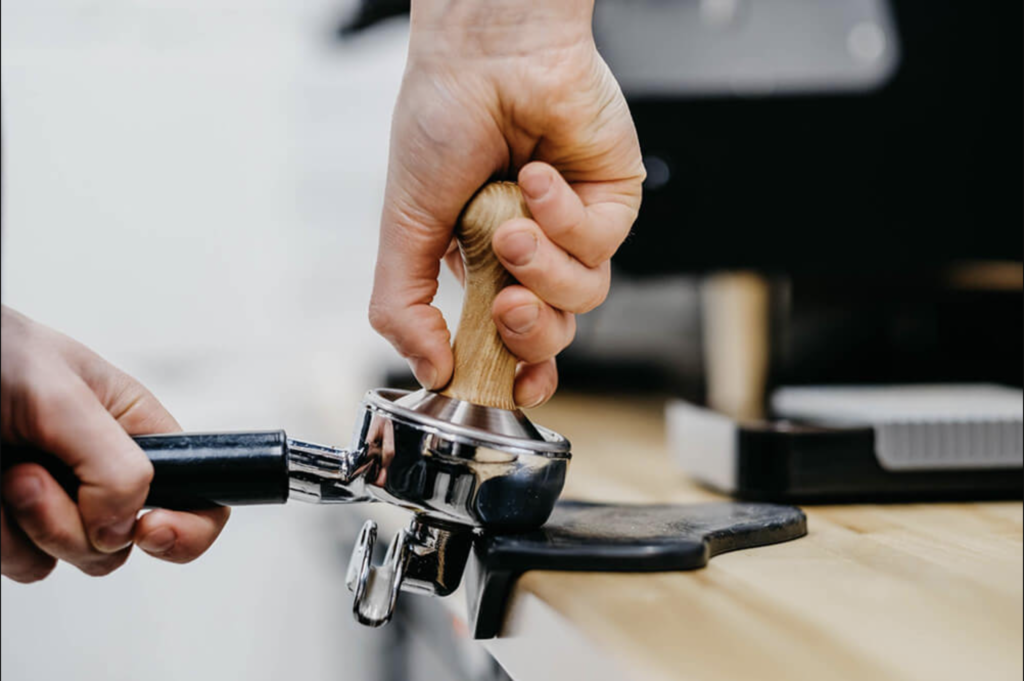
Distributing Coffee in the Basket and Tamping
Pressurized water always looks for the easiest way to get through the coffee pill. That is why, in order for the extraction to proceed correctly and evenly, the coffee must be evenly distributed in the basket: break up the lumps and tamp with tamper. In theory, this is simple, but in reality it will take practice.
When the grinder is not the newest millstones or the diameter is not too large, coffee clumps will form during grinding. We recommend breaking them with a coffee leveler: eg Coffee distributor; or a simple toothpick: break all the lumps in a circular motion in a circle and distribute the coffee evenly over the basket.
In no case should you knock on the holder with tamper either before or after tempering – this will lead to the formation of channels, and the espresso will turn out to be tasteless.
After distributing the coffee, tamp it with a tamper with medium pressure. Try to temper as evenly as possible, at an even angle. Otherwise, the coffee tablet will be skewed, and water will unevenly capture its surface.
After tempering, you need to remove the remnants of ground coffee from the edges of the basket and the “ears” of the holder so that the grains do not bake on the rubber gasket of the group.
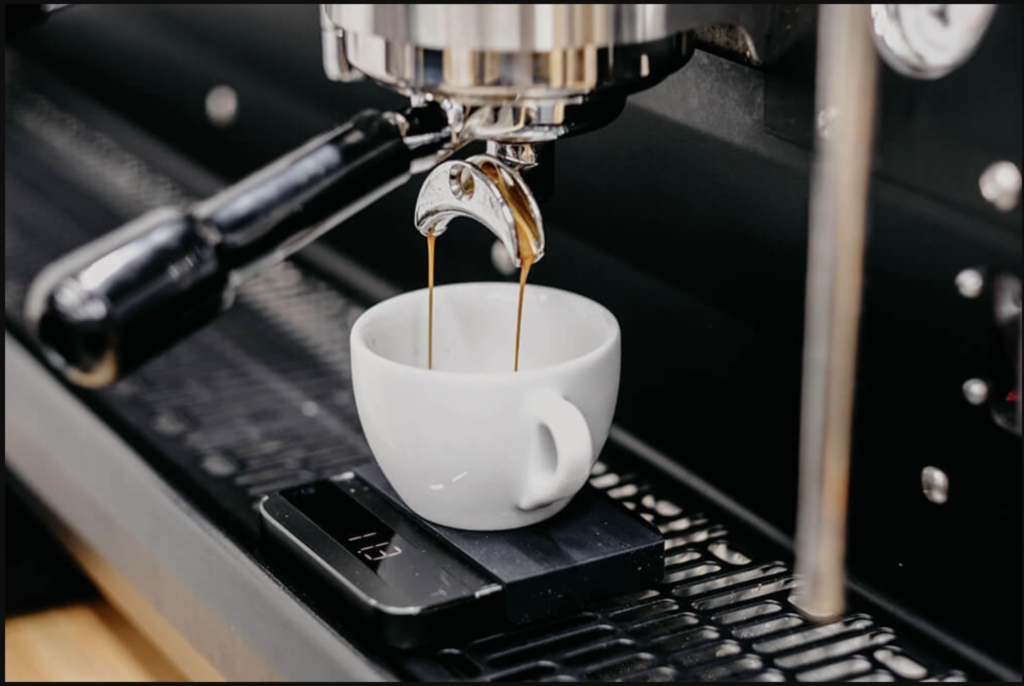
Extraction
After tempering, the holder is inserted into the coffee group and the spillage is turned on.
When using an espresso machine with a heat exchanger, before installing the holder into a group, you need to spill 50-100 ml of water so that the temperature drops to a working temperature. Usually at this time there is boiling water with a hiss, as soon as the hissing stops – you can prepare an espresso.
When using a two-boiler espresso machine, it is also necessary to spill water, but not in order to drop the temperature, but in order to clean the dispersion grid of coffee residues from the previous preparation. In this case, significantly less water needs to be spilled – until it becomes clear.
After installing the group head in the coffee machine, you must immediately turn on the spill, since chemical reactions are already starting in coffee at high temperatures. As a rule, espresso is prepared in 23-30 seconds from the moment the pump is turned on until it is turned off.
The weight of the finished drink should be approximately 1.8-2.2 times the dosage. That is, if you are using a ground coffee dosage of 18 grams, the approximate weight of a double espresso should be 32-40 grams. However, the ratio of the weight of the coffee to the weight of the water varies with the degree of roast of the coffee. A factor of 2 to 2.2 is often used for relatively light roasted coffee, and 1.6 to 1.8 for darker roasted coffee.
Reduce the grind if the espresso is dripping too fast, and increase the grind if it is slower. You need to change the degree of grind in minimal steps, because espresso reacts very sharply to this. After each adjustment, you need to grind one or two coffees to avoid using the previous grind remaining in the channel.
We recommend starting your experiments with a standard: this is an espresso weighing 36 grams, made from 18 grams of ground coffee in 27 seconds at a temperature of 199.4 ° F, and then adjust the parameters as described above.
Despite all the numbers, the main reference point is taste. Even if your dosage, brewing time or weight of the espresso is different from ideal, but the coffee turns out to be tasty – then thats what counts.

